Introduction to Millimeter Wave Technology for V-Band
V-Band MMW Summary
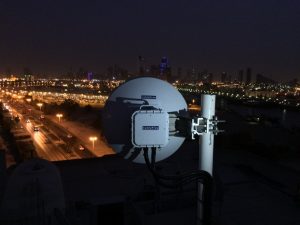
Millimeter Wave (MMW) using V-Band is a technology for high speed (2.5Gbps) high capacity wireless links, ideal for urban areas. Using high frequency microwave in the 57GHZ to 66GHz (V-Band) spectrum, links can be densely deployed in congested cities without interference, and without need for digging for cables and fibre optics, which can be costly, slow and highly disruptive. By contrast, MMW links can be deployed in hours, and moved and reused on different sites as network requirements evolve.
History of MMW
V-band (57-66GHz) MMW has been in use for several decades, before the E-band (70-90GHz) was opened for use. In 2003, the North American Federal Communications Commission (FCC) opened the high frequency 70, 80, and 90 GHz millimeter-wave (MMW) bands for commercial and public use, offering around 13 GHz of spectrum. This enabled the development of high-speed, point-to-point radio links, delivering:
-
Full-duplex data rates up to 1.25 Gbps
-
Carrier-class availability (99.999%)
-
Transmission ranges close to or over one mile
Due to their high capacity and cost-effectiveness, MMW radios are reshaping mobile backhaul and enterprise “last-mile” connectivity solutions.
Regulatory Background
The V-band (57–67 GHz) is open for use in many countries, though specific frequency allocations can vary, and a few nations restrict its use due to military applications. The high oxygen absorption at these frequencies means that signals are fully attenuated beyond about 2 km, allowing for high spatial re-use and strong resistance to interference. This characteristic makes the V-band ideal for covert communications, which is why it has been favoured by the defence and security sectors. Notably, in 1995, the V-band was used for the first inter-satellite crosslink communication between the US Milstar 1 and Milstar 2 satellites.
Target Markets and Applications for High Capacity “Last-Mile” Access Connectivity
In the US, only 13.4% of the roughly 750,000 commercial buildings with 20+ employees are connected to fibre networks, despite increasing demand for high-speed Internet (e.g. DS-3 at 45 Mbps or faster). The remaining 86.6% rely on slower copper-based connections, which are expensive (e.g. ~$3,000/month for DS-3).
Although 75% of non-fibre buildings are within one mile of existing fibre, the cost of laying new fibre – up to $250,000 per mile in major cities – and moratoriums on digging in urban areas, make fibre expansion economically and logistically difficult. In Europe, fibre penetration in commercial buildings is even lower-estimated at around 1%.
Millimeter-wave (MMW) radio systems offer a practical solution for “Last Mile” high-speed access, meeting carrier-class reliability standards at a fraction of the cost of fibre. When compared to laying just one mile of fibre in a major metropolitan US or European city, MMW gigabit Ethernet radios can be deployed for as little as 10% of fibre trenching costs, enabling much faster Return on Investment (ROI) and expanding service feasibility. Many high data rate applications can now be served and are economically feasible with MMW radio technology, including:
-
CLEC and ILEC fibre extensions and replacements
-
Metro Ethernet backhaul and ring closures
-
Wireless campus LAN extensions
-
Fibre backup and path diversity in campus networks
-
Disaster recovery solutions
-
High capacity SAN connectivity
-
Redundancy, portability and security for Homeland Security and Military
-
3G/WiFi/WiMAX backhaul in dense urban areas
-
Temporary or portable high-definition video and HDTV transport links
Why use V-Band MMW Technology?
The 60 GHz spectrum, particularly the 57–66 GHz range, is regulated differently across regions. In the US, the FCC has allocated a relatively wide 57–64 GHz block, enabling full-duplex Gigabit Ethernet operation. However, many other countries, such as Germany, France, and the UK, have access only to narrower, channelised portions of this band, making high-data-rate, cost-effective 60 GHz radio solutions less feasible outside the US. Even within the US, the high atmospheric absorption caused by oxygen (see Figure 1) significantly limits propagation, restricting reliable link distances to about 500 meters for achieving carrier-class availability (99.99–99.999%). The 60 GHz band is license-free in the US, making it attractive due to ease of use, but it lacks protection from interference. Overall, while 60 GHz radios may be suitable for short-range deployments in the US, they are not viable for longer links or where high reliability is required.
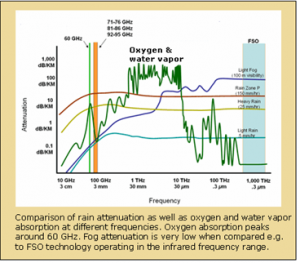
Transmission Distances for V-Band
As with all high-frequency systems, rain attenuation is the main factor limiting the practical transmission distance of V-band radio links, as shown in Figure 2. Heavy rain (e.g. at a rate of 100 mm/hr) can cause significant signal loss, up to 30 dB/km. Such intense rain is usually brief and localised, such as short cloud bursts. These short-duration outages mostly affect longer links, as storms typically move quickly across the path.
Decades of global rainfall data from the International Telecommunication Union (ITU) and others allow engineers to design reliable links by predicting outage durations, adjusting link lengths and margins, and understanding rainfall patterns by region. Rainfall characteristics and relationships between rainfall rate, statistical rain duration, rain drop sizes etc. are well-understood.
The ITU rain zone classification ranks areas from Region A (least rain) to Region Q (most rain) to guide deployment planning.
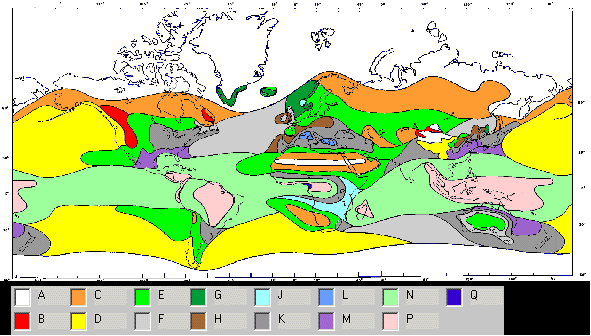
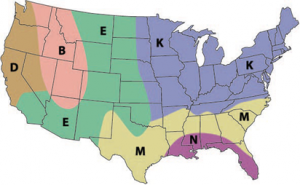
Figure 3: ITU rain zone classification of different regions around the world
80% of the continental US falls under ITU rain zones K or lower, meaning systems must handle up to 42 mm/hr of rainfall to achieve 99.99% availability. The highest rainfall in North America can be observed in Florida and along the Gulf Coast, classified as zone N. Australia experiences less rain, with the most populated areas in zones E and F (under 28 mm/hr).
By combining rainfall data with attenuation curves (Figures 2-4), it is possible to predict system performance. 70/80 GHz radio transmission equipment can achieve GbE connectivity at 99.99–99.999% availability at distances close to or over 1 mile, and 99.9% availability at over 2 miles. Using ring or mesh topologies, effective distances can double, thanks to path redundancy and the localised nature of heavy rain.
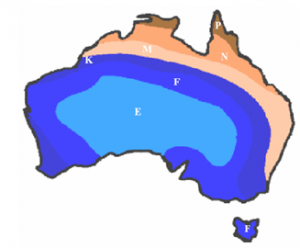
Figure 4: ITU rain zone classification for North America and Australia
A key advantage of millimeter-wave (MMW) technology over free space optics (FSO) is its resilience to environmental impairments. At 70/80 GHz, thick fog causes only 0.4 dB/km attenuation, while FSO systems suffer >250 dB/km, making them impractical for long distances. V-band radios are also unaffected by dust, sand, snow, and other path impairments, ensuring higher reliability across more challenging conditions.
Alternative High Data Rate Wireless Technologies
As alternatives to V-band wireless technology, there are a limited number of viable technologies capable of supporting high data rate connectivity. This section of the white paper provides a short overview.
Fibre-Optic Cable
Fibre-optic cable offers the highest bandwidth and supports very high data rates over long distances. While widespread in long-haul and inter-city networks, “Last-Mile” access is limited due to high installation costs, right-of-way-issues, and lengthy delays from construction, environmental and bureaucratic challenges. For these reasons, many cities are restricting trenching to avoid traffic disruption and public inconvenience.
Microwave Radio Solutions
Microwave radio provides high-speed point-to-point links, supporting full-duplex 100 Mbps Fast Ethernet and up to 500 Mbps per carrier in the 4-42 GHz range. However, the spectrum is limited and often congested in traditional microwave bands, and typical licensed spectrum channels are narrower than in the V-Band spectrum.
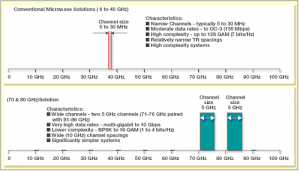
Figure 5: Comparison between high data rate microwave radios and a 70/80 GHz radio solution.
In general, licensed channel widths are 30 MHz or less, with some bands offering up to 56 Hz, and 112 MHz only in higher frequency, short-range bands. To achieve higher data rates (up to 880 Mbps), systems must use complex modulation schemes such as 1024QAM, which limit transmission distance and increase system complexity and cost. These bands also suffer from the limited spectrum, broader antenna beamwidths, and high QAM sensitivity to interface. As a result, dense urban deployments using traditional microwave solutions are difficult and inefficient compared to E-band solutions.
70-80 GHz (E-Band) Millimeter Wave Radio Solutions
Frequency allocations within the 70-80 GHz spectrum, vary significantly in different regions of the world.
ChatGPT said:
Free Space Optics (FSO, Optical Wireless)
Free Space Optics (FSO) uses infrared laser beams to transmit high data rates (1.5 Gbps and above) between remote locations. It is secure, interference-resistant due to its narrow beam, and operates license-free worldwide. However, FSO performance is severely impacted by visibility-reducing conditions such as fog, dust, and sandstorms, which can cause extreme signal attenuation- up to 130 dB/km in fog. These weather events are often localised, unpredictable, and can last for hours or days, leading to prolonged outages. As a result, achieving high availability levels (99.99-99.999%) typically limits FSO use to short distances of a few hundred meters, particularly in foggy or dust-prone areas. While FSO is a cost-effective solution for short-range connections, its reliance on clear line-of-sight and sensitivity to atmospheric conditions inherently restrict its use to limited-range deployments, often requiring backup link technologies for reliable operation.
The majority of industry experts agree that FSO technology can offer an interesting and potentially inexpensive alternative in wirelessly connecting remote locations over shorter distances. However, the physics of signal attenuation in the infrared spectrum will always restrict this technology to very short distances.
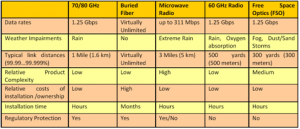
Table 1: Comparison chart of commercially available high data rate wireline and wireless transmission technologies
Point to Point and Point to Multipoint
Most V-band radios on the market are Point to Point architecture, however some Point to Multipoint (P2Mp) radios have already been launched and deployed.
802.11ad and 802.11ay standards
Some chipsets support IEEE 802.11ad and 802.11ay standards, which enable multi-gigabit speeds and point-to-multipoint (P2MP) communication. Although these standards are primarily designed for indoor use, they have been adopted in some outdoor commercial applications. WiGig is a specification for by the Wireless Gigabit Alliance for 802.11ad. Operating in the 58–71 GHz V-band range, it allows high-speed wireless communication for data, display, and audio. WiGig-enabled devices can operate across the 2.4, 5, and 60 GHz bands, delivering speeds up to 7 Gbps- much faster than earlier WiFi standards- while remaining compatible with existing devices. However, 60 GHz signals cannot typically pass through walls and rely on beamforming and reflections for indoor coverage. When a user moves out of line-of-sight, the system can switch to lower-frequency bands with lower speeds but better wall penetration.
Commercially Available Millimeter-Wave Solutions
The CableFree Millimeter-wave product portfolio includes point-to-point radio solutions operating from 100 Mbps to 10 Gbps (10 Gigabit Ethernet) speeds in the licensed 70 GHz E-band spectrum and up to 1Gbps in the unlicensed 60 GHz spectrum. The systems are available with different antenna sizes to meet the customer’s availability requirements over specific deployment distances at the most competitive price points of any V-band radio manufacturer in the industry. The systems are easy to deploy, and due to the low voltage power feed of 48 volts direct current (Vdc), no certified electrician is required for installing the system. Photographs of the CableFree MMW products are shown in Figure 6 below.
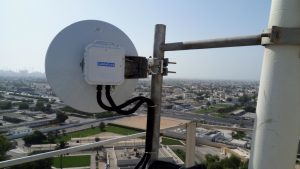
Figure 6: CableFree MMW radios are compact and highly integrated. 60cm antenna version shown
Summary and Conclusions
To meet growing demands for high-capacity network interconnectivity, wireless solutions now offer fibre-like performance at significantly lower costs compared to laying or leasing fibre. This is especially important since fibre access remains limited- only 13.4% of US commercial buildings with 20+ employees are connected, with even lower rates in many other countries.
Among the available technologies, unlicensed V-band systems in the 58-62 GHz range stand out for delivering the highest carrier-class availability figures at operating distances of under one mile typically. Many countries either already have and/or are opening the V-band spectrum for commercial use. While unlicensed 5 GHz radios and free-space optics (FSO) also support gigabit Ethernet connectivity, they are limited to much shorter distances- typically under 500 meters- when high availability is required.
References
- ITU-R P.676-6, “Attenuation by Atmospheric Gases,” 2005.
- ITU-R P.838-3, “Specific Attenuation Model for Rain for Use in Prediction Methods,” 2005.
- ITU-R P.837-4, “Characteristics of Precipitation for Propagation Modeling,” 2003.
- ITU-R P.840-3, “Attenuation Due to Clouds and Fog,” 1999.
For More Information on V-Band Millimeter Wave
For further information on V-Band MMW and the range of CableFree wireless networking products:
Please Contact Us
